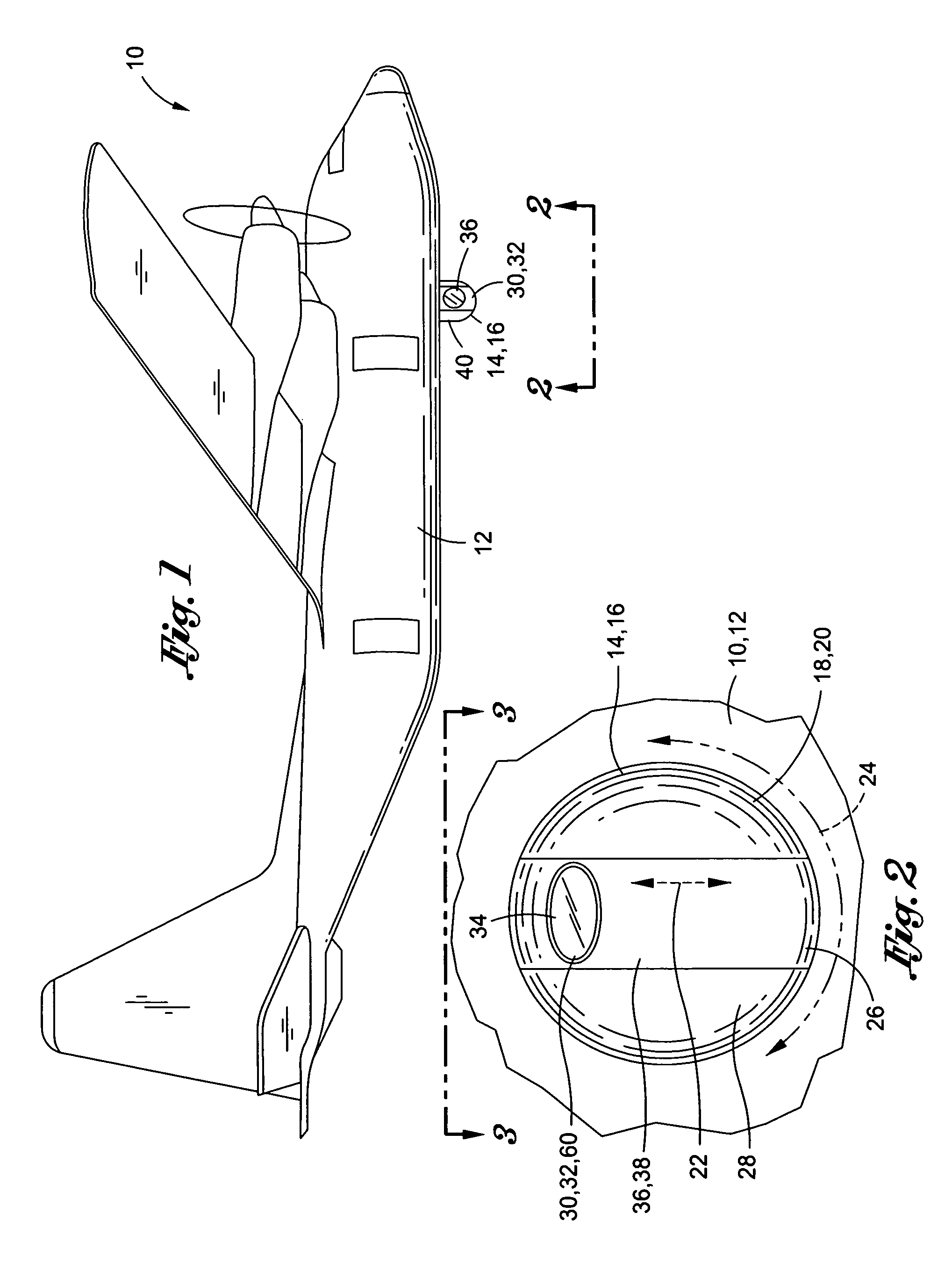Atmospheric turbulence isolation system and method
a technology of atmospheric turbulence and isolation system, which is applied in the direction of shock absorbers, machine supports, transportation and packaging, etc., can solve the problems of significant aerodynamic turbulence in the fuselage area, aerodynamic turbulence manifesting as pressure fluctuations, and exposing the turret assembly to undesirable aerodynamic effects, so as to reduce the time-averaged energy density and prevent the effect of beam jittering
- Summary
- Abstract
- Description
- Claims
- Application Information
AI Technical Summary
Benefits of technology
Problems solved by technology
Method used
Image
Examples
Embodiment Construction
[0029]Referring now to the drawings wherein the showings are for purposes of illustrating various embodiments of the disclosure only and not for purposes of limiting the same, shown in FIG. 1 is an aircraft 10 having an aerodynamic object 14 which is illustrated and described herein for exemplary purposes only as a turret assembly 16. The turret assembly 16 is shown mounted to a lower side of a fuselage 12 of the aircraft 10 although the turret assembly 16 or aerodynamic object 14 may be mounted at any location on any type of vehicle. Housed within the turret assembly 16 may be a variety of systems such as optical systems 32 and electronics systems 60 for a beam director 38 as may be used in a laser 36 system.
[0030]Advantageously, the turret assembly 16 may include a vibration isolation assembly 40 as disclosed herein for attenuating aerodynamic loads which may otherwise induce vibration of a system 30 that may be mounted within or which may form a part of the turret assembly 16. Un...
PUM
 Login to View More
Login to View More Abstract
Description
Claims
Application Information
 Login to View More
Login to View More - R&D
- Intellectual Property
- Life Sciences
- Materials
- Tech Scout
- Unparalleled Data Quality
- Higher Quality Content
- 60% Fewer Hallucinations
Browse by: Latest US Patents, China's latest patents, Technical Efficacy Thesaurus, Application Domain, Technology Topic, Popular Technical Reports.
© 2025 PatSnap. All rights reserved.Legal|Privacy policy|Modern Slavery Act Transparency Statement|Sitemap|About US| Contact US: help@patsnap.com



